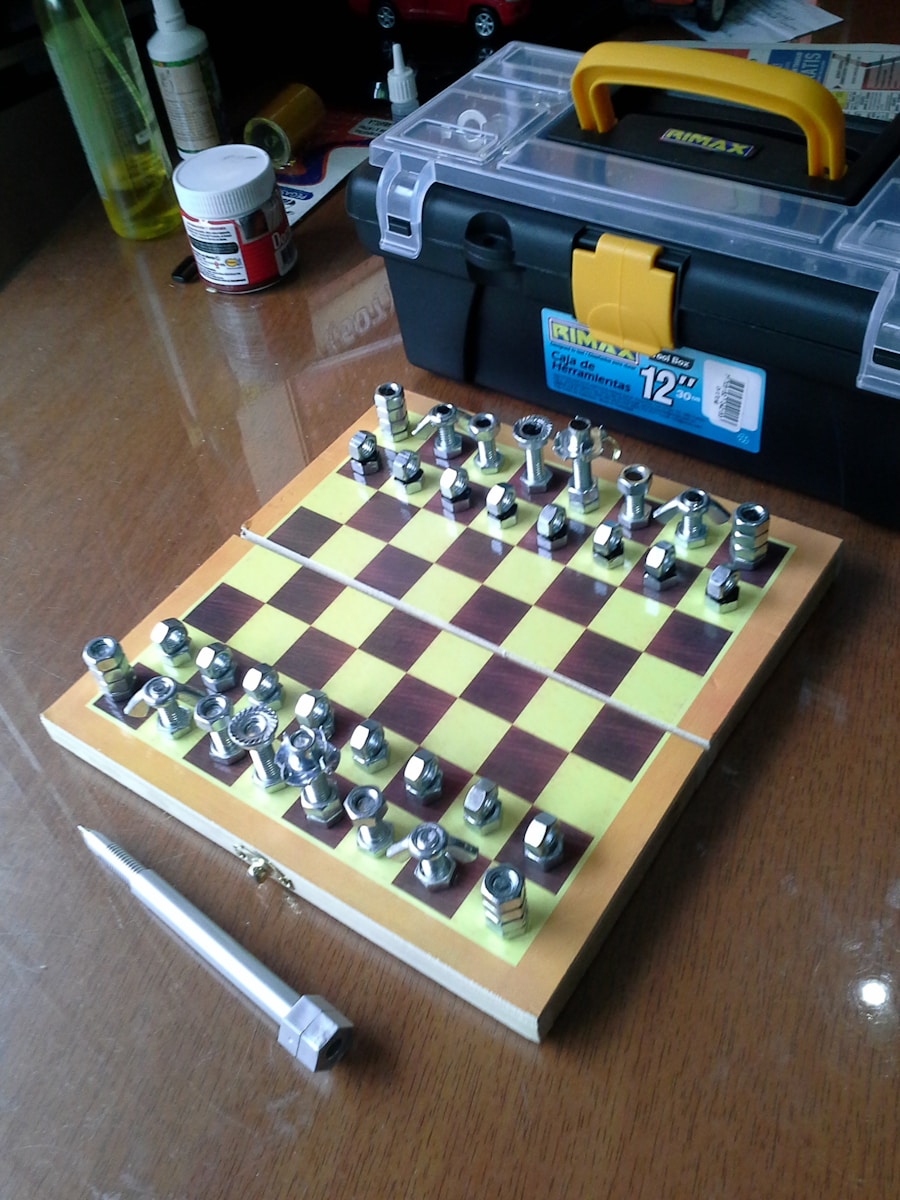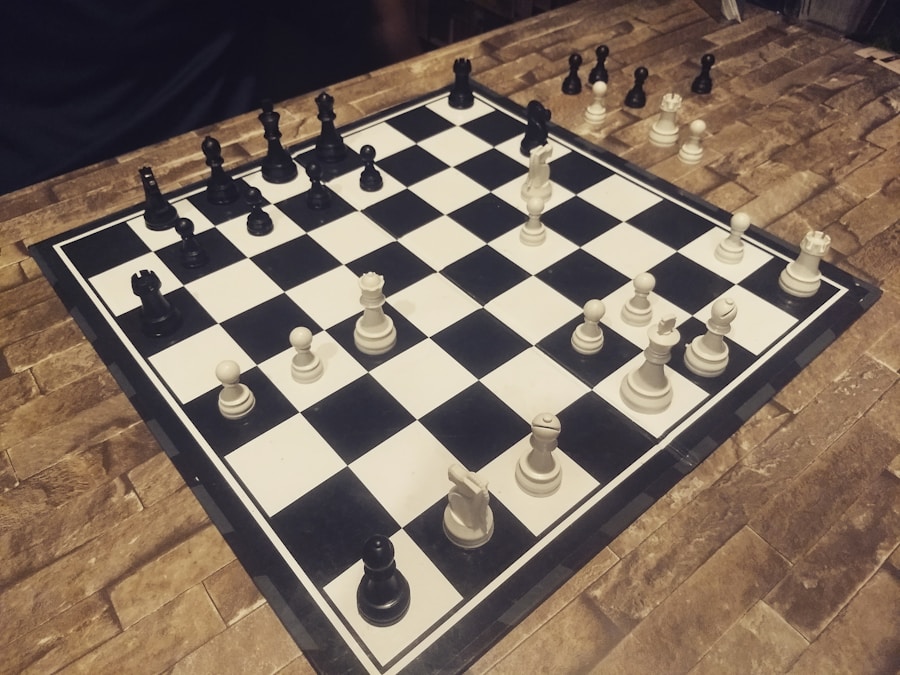Download links
How to install Mastering Chess: Strategies for Success APK?
1. Tap the downloaded Mastering Chess: Strategies for Success APK file.
2. Touch install.
3. Follow the steps on the screen.
Description
Chess is a two-player strategy board game that has captivated minds for centuries. The game is played on an 8×8 grid, known as a chessboard, where each player commands an army of 16 pieces: one king, one queen, two rooks, two knights, two bishops, and eight pawns. Each piece has its own unique movement rules, which contribute to the complexity and depth of the game.
The objective is to checkmate the opponent’s king, meaning the king is placed in a position where it cannot escape capture. This fundamental goal drives all strategies and tactics employed throughout the game. Understanding the basic rules and movements of each piece is essential for any aspiring chess player.
The king moves one square in any direction, while the queen can move any number of squares in any direction. Rooks move horizontally or vertically, bishops move diagonally, knights have a unique L-shaped movement, and pawns move forward but capture diagonally. Additionally, there are special moves such as castling and en passant that add layers of strategy to the game.
Familiarity with these movements allows players to formulate plans and anticipate their opponent’s actions, laying the groundwork for more advanced strategies.
Key Takeaways
- Understanding the basics of chess is crucial for beginners, including learning the movement of each piece and the objective of the game.
- Developing a strong opening repertoire involves studying and practicing various opening moves to gain an early advantage in the game.
- Mastering tactical and positional play requires understanding different strategies and being able to adapt to changing game situations.
- Improving endgame techniques involves learning how to effectively use remaining pieces to secure a win or a draw.
- Enhancing strategic thinking and planning involves analyzing the board and anticipating future moves to gain a long-term advantage.
- Tips for improving decision making and time management in chess include staying focused, considering all options, and managing the clock effectively.
Developing a Strong Opening Repertoire
A well-structured opening repertoire is crucial for success in chess. The opening phase of the game sets the stage for the middle game and can significantly influence the outcome. Players should familiarize themselves with various opening strategies, such as the Ruy Lopez, Sicilian Defense, and Queen’s Gambit, among others.
For instance, in the Ruy Lopez, White aims to control the center with pawns on e4 and d4 while developing pieces harmoniously. In addition to knowing specific openings, players should also understand the underlying principles that govern good opening play.
Controlling the center is paramount; pieces should be developed towards the center squares (d4, e4, d5, e5) to maximize their influence. Furthermore, players should aim to develop their minor pieces (knights and bishops) before moving their major pieces (rooks and queen) and avoid making excessive pawn moves or moving the same piece multiple times in the opening. By adhering to these principles while also incorporating specific openings into their repertoire, players can create a solid foundation for their games.
Mastering Tactical and Positional Play

Tactical awareness is a vital skill in chess that involves recognizing patterns and opportunities for immediate gain. Tactics often revolve around combinations that can lead to material advantage or checkmate. Common tactical motifs include forks, pins, skewers, discovered attacks, and double attacks.
For example, a knight fork occurs when a knight simultaneously attacks two or more pieces, forcing the opponent to choose which piece to save. Practicing tactical puzzles regularly can sharpen this skill and help players recognize these opportunities during actual games. Positional play, on the other hand, focuses on long-term advantages rather than immediate gains.
It involves evaluating the strengths and weaknesses of both players’ positions and making strategic decisions based on that analysis. Key concepts in positional play include pawn structure, piece activity, control of key squares, and weak squares in the opponent’s camp. For instance, a player may choose to exchange pieces to simplify a position when they have a material advantage or to create weaknesses in their opponent’s pawn structure.
Balancing tactical awareness with positional understanding allows players to navigate complex positions effectively and capitalize on their opponent’s mistakes.
Improving Endgame Techniques
| Technique | Success Rate | Time Saved |
|---|---|---|
| Pawn Endgames | 75% | 10 minutes |
| Rook Endgames | 80% | 15 minutes |
| Bishop and Knight Endgames | 70% | 20 minutes |
| Queen Endgames | 85% | 25 minutes |
The endgame is a critical phase of chess that often determines the outcome of a match. It occurs when there are fewer pieces left on the board, and players must rely on their knowledge of endgame principles to convert advantages into victories or salvage draws from inferior positions. Understanding fundamental endgame concepts such as king activity, pawn promotion, and opposition is essential for success in this phase of the game.
For example, in king and pawn endgames, activating the king is crucial for supporting pawn advancement while preventing the opponent’s pawns from promoting. Studying specific endgame scenarios can greatly enhance a player’s proficiency in this area. Classic endgames like king and pawn versus king or rook versus king are foundational examples that every chess player should master.
Additionally, players should familiarize themselves with theoretical draws such as the “Stalemate” or “Fortress” concepts that can help them salvage points in seemingly lost positions. By dedicating time to endgame study and practice, players can significantly improve their overall performance and increase their chances of converting winning positions into victories.
Enhancing Strategic Thinking and Planning
Strategic thinking in chess involves formulating long-term plans based on an evaluation of the position on the board. This requires an understanding of various strategic elements such as pawn structure, piece coordination, and potential weaknesses in both one’s own position and that of the opponent. A well-thought-out plan can guide a player’s moves throughout the game and help them achieve their objectives more effectively.
For instance, if a player identifies that their opponent has weak pawns on light squares, they might plan to maneuver their pieces towards those squares to exploit this weakness. Moreover, strategic thinking also encompasses flexibility; players must be prepared to adapt their plans based on their opponent’s responses. A rigid approach can lead to missed opportunities or even blunders if circumstances change unexpectedly.
An effective strategy often involves creating multiple threats simultaneously or transitioning between different plans as needed. By cultivating a mindset focused on strategic planning and adaptability, players can enhance their overall gameplay and become more formidable opponents.
Tips for Improving Decision Making and Time Management in Chess

Effective decision-making is crucial in chess, where each move can significantly impact the game’s outcome. Players should develop a systematic approach to evaluating positions before making decisions. This includes assessing material balance, piece activity, king safety, and potential threats from the opponent.
A common method is to use a checklist: first evaluate whether there are any immediate threats or tactics available; then consider possible candidate moves; finally analyze each candidate move’s consequences before making a decision.
In tournament settings or online play with time controls, managing one’s clock effectively can be just as important as making sound moves.
Players should practice pacing themselves throughout different phases of the game—spending more time on critical positions while being mindful not to dwell excessively on simpler moves. Setting personal time limits for each phase during practice games can help develop this skill. By honing decision-making processes and improving time management techniques, players can enhance their overall performance and reduce anxiety during competitive play.
If you’re a chess enthusiast looking to improve your game, you may want to check out this article on PicsArt Photo Studio Collage. While it may not seem directly related to chess, visualizing different strategies and game plans through collages can be a fun and creative way to enhance your skills on the board. Plus, it’s always interesting to explore different forms of art and how they can intersect with the game of chess.
FAQs
What is chess?
Chess is a two-player strategy board game that is played on an 8×8 grid. It is one of the most popular and enduring games in the world, with a rich history dating back over 1500 years.
How is chess played?
Chess is played on a square board divided into 64 squares of alternating colors. Each player starts with 16 pieces: one king, one queen, two rooks, two knights, two bishops, and eight pawns. The objective of the game is to checkmate the opponent’s king, which means putting the king into a position where it cannot escape capture.
What are the basic rules of chess?
Each type of chess piece moves in a specific way: the king moves one square in any direction, the queen moves any number of squares in any direction, the rook moves any number of squares horizontally or vertically, the bishop moves any number of squares diagonally, the knight moves in an L-shape, and the pawn moves forward one square (or two on its first move) and captures diagonally.
What is the history of chess?
Chess originated in India around the 6th century and spread to Persia, where it became known as “shatranj.” It then spread to the Arab world and Europe, evolving into the modern game of chess that we know today.
What are the benefits of playing chess?
Chess has been shown to have numerous cognitive benefits, including improving memory, concentration, problem-solving skills, and strategic thinking. It is also a popular competitive sport and has a strong international following.





